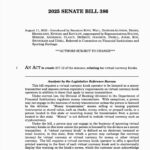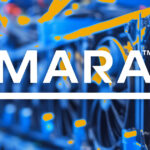Hyperliquid Surpasses Robinhood in Trading Volume
- Hyperliquid processed approximately $330 billion in trading volume during July 2025, briefly overtaking Robinhood.
- The HLP vault and Assistance Fund buybacks helped align traders, market makers, and token holders in a reinforcing cycle.
A year after the launch of its own layer 1 (L1), Hyperliquid has emerged as one of the leading decentralized finance (DeFi) platforms for perpetuals, recording roughly $319 billion in trading volume for July 2025. Interestingly, the core team behind this achievement is thought to be made up of only 11 members.
This guide will explore the technical design and operational decisions that made such significant scalability possible.
The chain is structured into two closely connected elements: HyperCore, which oversees the on-chain order book, margining, liquidations, and clearing; and HyperEVM, a versatile smart contract layer that directly interacts with the exchange state.
Both components are secured by HyperBFT, a proof-of-stake (PoS) consensus model inspired by HotStuff that maintains a consistent transaction order without dependence on off-chain systems. The HyperEVM went live on mainnet on February 18, 2025, facilitating programmability around the core of the exchange.
Did you know? Hyperliquid maintains a median trade latency of merely 0.2 seconds (with the 99th percentile delays falling below 0.9 seconds) and is capable of managing up to 200,000 transactions per second, competing with centralized exchanges in terms of speed.
July marked Hyperliquid’s most successful month to date. According to data from DefiLlama, the platform handled around $319 billion in perpetuals trading volume. This surge pushed the overall DeFi perpetuals volume to a record-breaking $487 billion — a 34% increase from June.
At the same time, industry reports indicated a combined trading figure of $330.8 billion, which also included spot trading. Headlines highlighted that this led Hyperliquid to briefly surpass Robinhood.
Robinhood’s trading statistics for July serve as a benchmark: $209.1 billion in equities notional, $16.8 billion in crypto trading, and $11.9 billion at Bitstamp (a subsidiary of Robinhood), totaling around $237.8 billion.
Several media sources pointed out that July marked the third consecutive month where Hyperliquid’s trading volumes exceeded those of Robinhood — a remarkable feat for a team of just 11. Moreover, these figures represent monthly totals rather than cumulative numbers, indicating sustained high-frequency activity rather than a temporary spike.
The scalability of Hyperliquid arises from a meticulously divided state machine operating under a unified consensus.
HyperCore functions as the exchange engine, with all central-limit order books, margin accounting, matching, and liquidations managed entirely on-chain. The documentation emphasizes that it steers clear of off-chain order books. Each asset’s book exists on-chain as part of the overarching chain state, following price-time priority matching.
HyperEVM serves as an Ethereum Virtual Machine (EVM)-compatible environment built on the same blockchain. It shares consensus and data availability constructs with HyperCore, allowing applications to develop around the exchange without needing to exit the L1.
Both components depend on HyperBFT, a PoS consensus model inspired by HotStuff, which ensures a consistent transaction order throughout the entire system. This design focuses on low-latency finality while maintaining custody and execution on-chain.
This model distinguishes Hyperliquid from typical decentralized exchange (DEX) frameworks, such as automated market makers (AMMs) reliant on liquidity pools, or hybrid order-book DEXs that keep orders on-chain but perform matching off-chain.
Instead, Hyperliquid executes its core exchange functions (order books, matching, margin, and liquidations) completely on-chain while still allowing EVM-based applications to integrate naturally.
Founder Jeff Yan has stated that the core team consists of around 11 members, with hiring being intentionally selective to preserve speed and cultural cohesion. The focus remains on a small, coordinated team rather than rapid expansion of headcount.
The project is fully self-funded and has opted out of venture capital. Yan views this as a way to align ownership with users and prioritize independence from investor deadlines. This reasoning also explains the absence of significant listings on centralized exchanges — the priority lies in technology and community adoption.
Execution is conducted through a tightly-knit feedback loop. When an API outage occurred on July 29, causing order execution to be interrupted for 37 minutes, the team promptly reimbursed affected traders $1.99 million the following business day. For a DeFi platform, this level of responsiveness exemplifies its “ship, fix, own it” mentality.
“Hiring the wrong person is worse than not hiring at all,” Yan noted on the benefits of maintaining a lean workforce.
By employing selective hiring, maintaining independence from venture capital, and ensuring rapid incident resolution, Hyperliquid demonstrates how a small team can operate at a pace characteristic of centralized exchanges while retaining full custody and execution on-chain.
The HLP Vault and Assistance Fund
HLP is a protocol-managed vault that manages market-making and liquidations on HyperCore. Anyone can deposit funds, with contributors sharing in the vault’s profit and loss (PnL) along with a share of trading fees. By establishing market-making infrastructure as open and rules-based, HLP reduces the reliance on bilateral market-maker agreements that are common in other platforms.
As reported by DefiLlama dashboards, 93% of protocol fees are directed to the Assistance Fund, which utilizes these funds for buybacks and burning HYPE tokens, while the remaining 7% is allocated to HLP. This creates a feedback loop: Higher organic volume facilitates larger buybacks, diminishing token supply, while still allowing a share to support the vault.
Perpetual funding on Hyperliquid operates entirely peer-to-peer, with no fee taken by the protocol. It is paid hourly, capped at 4% per hour.
The rates consist of a fixed interest (0.01% every eight hours, prorated hourly) combined with a variable premium sourced from an oracle that aggregates centralized exchange spot prices.
This structure ensures that perpetual prices remain aligned with those of the spot market. Payments are incurred by both sides of the order book, reinforcing risk-sharing without embedding yield promises.
On November 29, 2024, the project initiated the HYPE genesis airdrop, distributing around 310 million tokens to early participants. This event coincided with the token’s trading launch, further emphasizing a community-centric approach. Hyperliquid (HYPE) is utilized for staking in HyperBFT and for gas fees on-chain.
Momentum increased in mid-2025 when Phantom Wallet integrated Hyperliquid perpetuals directly within its application. Analysts and media highlighted a noticeable boost in trading flow and user adoption.
According to VanEck’s July report, the Phantom rollout attributed $2.66 billion in trading volume, $1.3 million in fees, and approximately 20,900 new users. Additional reports tracked $1.8 billion in routed volume in just the first 16 days.
On the product front, HyperEVM was launched on February 18, 2025, enabling general-purpose smart contracts and fostering pathways for wallets, vaults, and listing processes to integrate with the exchange. This flexibility encouraged external developers to engage with the ecosystem and supported a consistent stream of new markets.
Did you know? Hyperliquid’s genesis airdrop distributed around $1.6 billion worth of HYPE across 90,000 users, which equated to 31% of the total supply. At peak values, the average airdrop value surpassed $100,000 per user.
In early 2025, concerns regarding validator transparency and centralization were raised by researchers and validators. The team acknowledged these issues and indicated plans to open-source the code after enhancing its security. They also detailed intentions to broaden validator involvement.
Hyperliquid’s market share, often estimated at 75%-80% of decentralized perpetuals trading, raises concerns about concentration. Observers noted the advantages of network effects, but also the systemic risks if liquidity shifts or disruptions occur at a single venue.
A 37-minute API outage on July 29 temporarily halted trading on the platform. Hyperliquid compensated users with approximately $2 million the following day. While the prompt refund bolstered its reputation for quick response, the incident also underscored the risks leveraged traders face during outages.
Critics sometimes focus on how protocol-managed vaults allocate capital off-chain or across different chains, as well as the design of buyback mechanisms. These aspects remain areas of operational risk to monitor as Hyperliquid continues to grow.
Key Factors Contributing to Hyperliquid’s Success
Hyperliquid’s achievements can be attributed to several key factors:
- Its execution-first chain design: HyperCore manages on-chain matching and margin, while HyperEVM offers composability, all governed by HyperBFT. This configuration provides near centralized exchange (CEX) latency while keeping custody and state fully on-chain.
- Incentive alignment through fee-funded buybacks (via the Assistance Fund) and the open HLP vault has created a self-reinforcing liquidity cycle as trading volumes grow.
- Maintaining a small core team of roughly 11 contributors has minimized managerial overhead and accelerated product cycles.
- Distribution advantages (notably the integration of Phantom Wallet) have decreased onboarding friction and broadened reach during a favorable period for on-chain derivatives.
For those assessing long-term sustainability, several key areas warrant attention:
- Will validator decentralization and code open-sourcing progress as promised?
- How swiftly will spot markets, central limit order book activity, and third-party applications develop around HyperEVM?
- Will revenue and volume remain robust as competitors adopt similar models?
This article is not a source of investment advice or recommendations. Every investment and trading decision comes with inherent risks, and readers should carry out their own research prior to making any decisions!



















